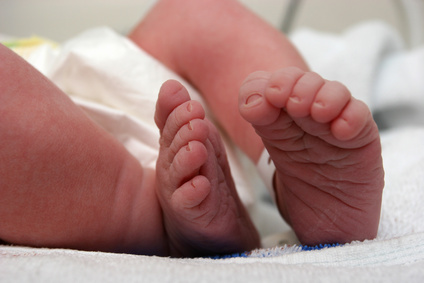
Naheed Jehangir
Every mother wants to see her baby born healthy and without any deformities. Unfortunately, some babies are born with a condition known as clubfoot, which causes deformities in their feet. Clubfoot is a congenital disease that manifests at birth, and the entire month of June is dedicated to raising awareness about this condition worldwide.
In Lady Reading Hospital Peshawar, from 2017 to May 2023, a total of 1,582 clubfoot patients have been registered. Out of these, 1,108 patients have fully recovered and are leading normal lives, while the remaining are currently undergoing treatment.
What is clubfoot?
Dr. Obaidullah, an expert at Lady Reading Hospital Peshawar Clubfoot Department, explains that clubfoot is a condition characterized by congenital curvature of the feet and ankles. It occurs due to tight ligaments and tendons, which pull the foot into an abnormal position. The foot can curve inward or outward. Timely treatment is crucial to enable the child to recover and lead a normal life.
What are the causes?
Iftikhar Shehzad, Director of the Physiotherapy Department, mentions that clubfoot can have genetic factors. Children born to women over the age of 45 are at a higher risk of developing this condition. If one parent has clubfoot, there is a one in three chance that their child may also have it. Clubfoot is associated with a short Achilles tendon at the back of the ankle.
Also Read: Budget Controversy: Concerns Arise Over Salary Increase Disparity in KP
Boys, he adds further, are more susceptible to this condition than girls. Clubfoot can affect one or both feet. Although it is not typically painful for children, if left untreated, it can impede walking and potentially lead to disability. In the UK, approximately 1 in every 1,000 babies is affected by clubfoot, with about half of them having both feet affected.
Diagnosis of clubfoot
Dr. Obaidullah explains that clubfoot is usually diagnosed after birth, although it can also be identified during routine ultrasound scans conducted between 18 and 21 weeks of pregnancy. Prenatal diagnosis allows parents to discuss treatment options with doctors and understand the position of the baby's feet.
Some babies may be born with normal feet but in an abnormal position. In many cases, the feet correct themselves by three months of age, but some children may require physiotherapy sessions or regular treatment.
Clubfoot treatment
Dr. Iftikhar Shahzad emphasizes that treatment for clubfoot should ideally begin within one to two weeks after the baby's birth. The primary treatment involves Ponseti splinting or stretching of the affected child's legs, which is performed over a period of 5 to 8 weeks. Following this, most children undergo a minor surgical procedure under local anesthesia to position the foot correctly.
To maintain the corrected position, children are fitted with special shoes known as foot abduction braces. They are required to wear these braces constantly for the first three months and then overnight until they are around four or five years old. Successful treatment enables the child to wear regular shoes. In some cases, children with a single affected foot may have a slightly shorter leg and foot, leading to potential fatigue compared to their peers.
Regarding the possibility of the disease recurring, Dr. Obaidullah explains that clubfoot may sometimes reappear, especially if the treatment protocol is not strictly followed. In such cases, certain treatment steps may need to be repeated to achieve optimal results.